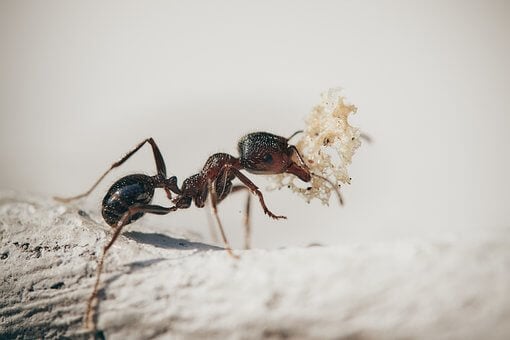It’s a common sight: ants marching in single file, their paths weaving through grass and cracks in the pavement, guided by invisible trails of scent. But what happens when ants encounter multiple food sources? A team of researchers from Florida State University has developed a mathematical model that explains how ants form and maintain multiple trails to different food sources—an advancement in understanding the self-organizing behavior of social insects.
Journal: Journal of Mathematical Biology, September 2024, DOI: 10.1007/s00285-024-02136-2 | Reading time: 6 minutes
The Secret Behind Ants’ Collective Intelligence
Ants rely on chemical pheromones to communicate, laying trails that guide their colony to food sources. When a foraging ant discovers food, it marks the path with pheromones, creating a trail for others to follow. Over time, these trails often converge on the most efficient path. But in environments with multiple food sources, the process becomes more intricate.
Assistant Professor of Mathematics Bhargav Karamched and his team, including graduate student Sean Hartman, devised a simple yet powerful model to explain this phenomenon. Published in the Journal of Mathematical Biology, their work combines computational simulations, stochastic modeling, and partial differential equations (PDEs) to replicate the behavior of foraging ants. “The power of mathematics is that we can devise models that reproduce experimentally observed data and make concrete predictions,” said Karamched, who also works with FSU’s Institute of Molecular Biophysics.
A Model for Self-Organization
The team’s model divides ants into two groups: foragers and returners. Foragers wander randomly in search of food, while returners, having located food, move purposefully back to the nest, reinforcing trails with pheromones. The model predicts that when food sources are equidistant from the nest, ants maintain multiple trails. However, if one source is slightly closer, the colony eventually focuses on that source.
This behavior is governed by the dynamics of pheromone concentration. Returners deposit fewer pheromones as the distance to food decreases, allowing the colony to adapt to the most efficient routes. “It was fascinating to see how these interactions could lead to multiple stable trails or a singular dominant trail, depending on the setup,” said Hartman, who helped refine the simulations.
Implications Beyond Ants
While the model is tailored to ants, its applications extend to other systems that use chemical signaling, such as bacteria, slime molds, and even some vertebrates. “This framework can help us understand collective behaviors in diverse biological systems,” said Karamched. From microbial colonies coordinating movement to fish schooling patterns, the principles underlying ant trail formation may offer insights into broader ecological and social phenomena.
The simplicity of the model is its strength. By focusing on essential interactions, it avoids unnecessary complexity while capturing key dynamics. This approach could pave the way for new studies in both biological and artificial systems, where understanding emergent behavior is crucial.
Glossary
- Pheromone: A chemical substance released by animals to communicate with others of the same species.
- Stochastic Modeling: A mathematical approach that incorporates randomness to predict complex system behavior.
- Partial Differential Equations (PDEs): Equations that describe how variables change over space and time.
- Self-Organization: The process by which order emerges in a system without central control.
- Equidistant: Equal distance from a particular point.
Interactive Quiz
1. What do ants use to communicate and guide others to food?
Ants use chemical pheromones to communicate and guide others.
2. What determines whether ants focus on one trail or maintain multiple trails?
The distance to food and the concentration of pheromones determine whether ants focus on one trail or maintain multiple trails.
3. What other organisms might use similar chemical signaling systems?
Organisms such as bacteria, slime molds, fish, and some reptiles and mammals use similar chemical signaling systems.
4. What does “stochastic modeling” refer to in this research?
Stochastic modeling refers to using randomness to simulate and predict complex system behavior.
Enjoy this story? Subscribe to our newsletter at scienceblog.substack.com
If our reporting has informed or inspired you, please consider making a donation. Every contribution, no matter the size, empowers us to continue delivering accurate, engaging, and trustworthy science and medical news. Independent journalism requires time, effort, and resources—your support ensures we can keep uncovering the stories that matter most to you.
Join us in making knowledge accessible and impactful. Thank you for standing with us!

